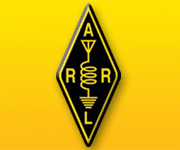US and Region 2 Amateur Radio Direction-Finding Championships Results are In
The results are in for the 20th US ARDF Championships and 11th IARU Region 2 Amateur Radio Direction Finding (ARDF). Four days of competitions were held October 14 – 17 in North Carolina, and the results will help determine the makeup of the US ARDF team at the 20th ARDF World Championships, set for summer 2022 in Serbia. The US Championships and the World Championships were rescheduled from 2020 after they had to be canceled due to COVID-19 restrictions. Even so, visitors from outside the US were unable to attend this year’s competition due to continued travel restrictions, but a hardy group of hopefuls for the US team came ready to compete.
Competitors ranged in age from 14 to 74. Competitive events were held in the Birkhead Mountains Wilderness Area just south of Asheboro, North Carolina. Events began on October 14 with sprint events, a fast-paced competition in which two sets of five transmitters operating on two different 80-meter frequencies transmit nonconsecutive 12-second bursts every minute. Between the transmitters, competitors pass through an open spectator area, where supporters and onlookers may cheer them on. Two elite competitors completed the sprint course in just over 15 minutes, a world-class time.
Two classic events were held on October 15. The longer courses for the younger adult categories took place on 2 meters, and the shorter courses for the older adult and youth categories took place on 80 meters. Separating the longer and shorter courses and holding them on separate, non-interfering bands allowed course designs to be tailored for optimum challenge within each competitive category.
Foxoring, a combination of radio direction finding and classic orienteering on 80 meters, followed the next day.
“Foxoring tests the map-and-compass navigation skills of the participants,” ARRL ARDF Co-coordinator Gerald Boyd, WB8WFK, explained. “Micropower 80-meter foxes transmitting continuously are placed near marked locations on the map. The transmissions are so weak that competitors’ receivers cannot detect them until they arrive very close to the marked locations. Once they can hear one of the transmitters, it is a quick sprint to find its exact location.”
Competitions concluded on October 17 with a different map and two more classic events, this time with the bands swapped for those on the longer and shorter courses. This gave everyone the opportunity to compete on both 2 and 80 meters over the 2 days of competitions. Twenty-seven competitors competed in the events.
“Two standout youth competitors turned in impressive times on adult courses in the womens’ W19 category,” Boyd said. Youths included Adalia Schafrath-Craig (14 years old) of North Carolina who picked up classic and foxoring golds, and Elizabeth (Lisa) Afonkin (15 years old) of Massachusetts who won the sprint gold.
US competitors in the six IARU age categories for men (M19 – M70) and women (W19 – W65) are under consideration for membership in the US team for the 2022 ARDF Championships. Up to three competitors in each age/gender category and competition format may be on a national team.
Contact the ARRL ARDF Committee for more information on attending, participating in, or hosting ARDF competitions. ARDF competitors do not need an amateur radio license. For more information on amateur radio direction finding, visit the ARRL ARDF website.
Back





